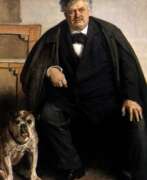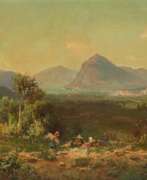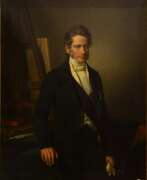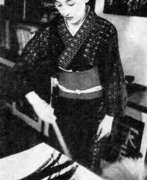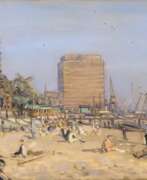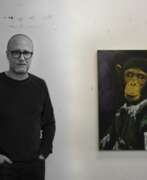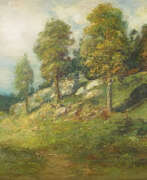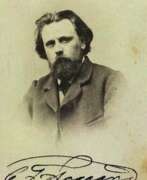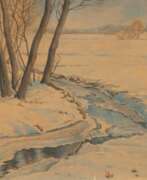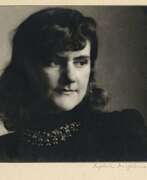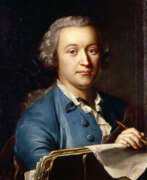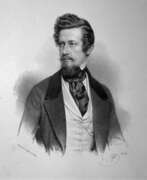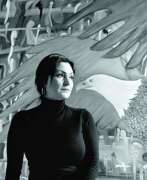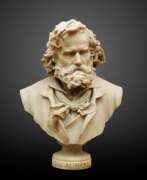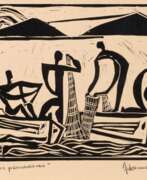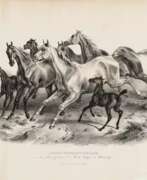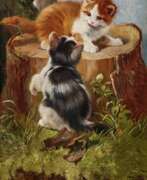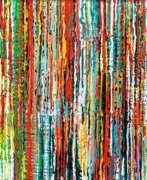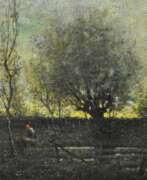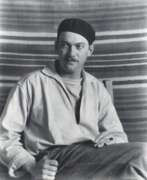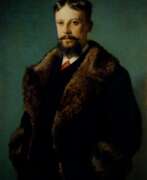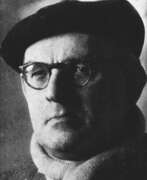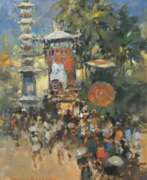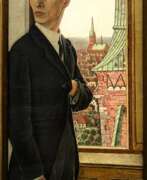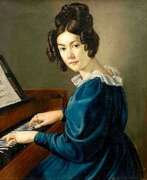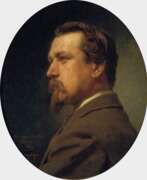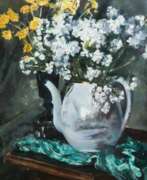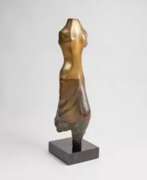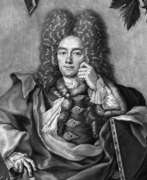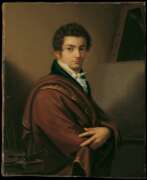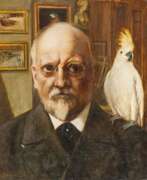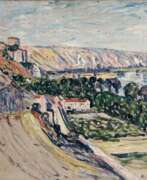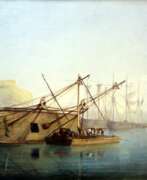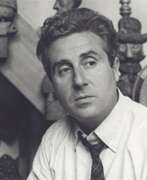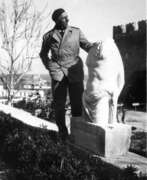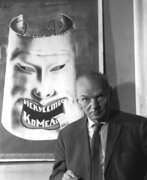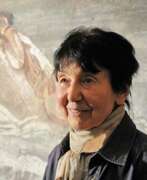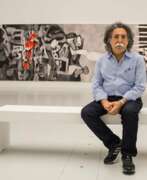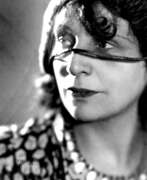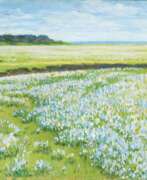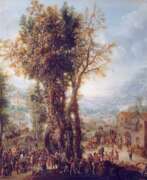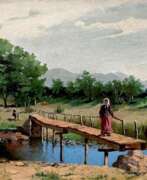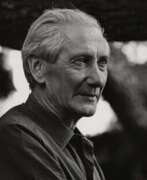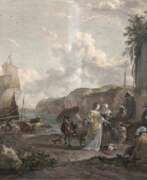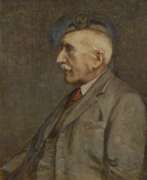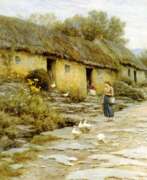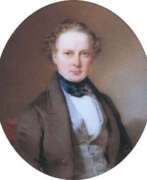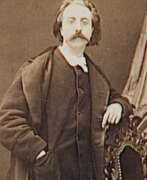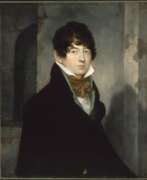Landscape painting
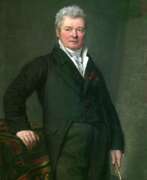

Fyodor Yakovlevich Alekseyev (Russian: Фёдор Яковлевич Алексеев) was a Russian painter born around 1753 in Saint Petersburg. Known as the "Russian Canaletto" for his masterful vedute, or detailed paintings of cityscapes, Alekseyev made significant contributions to Russian art, particularly in depicting urban landscapes.
Alekseyev was admitted to the Imperial Academy of Arts in 1764, where he initially studied ornamental sculpture and scenic painting under Antonio Peresinotti. He spent several years in Venice, funded by a fellowship, where he studied theater painting but preferred creating landscapes and copying works by old masters. Upon his return to Russia, he faced restrictions but gradually gained recognition for his independent work. His notable painting "View of the Palace Embankment from the Fortress" earned him the title of Academician in 1794.
In 1800, Tsar Paul I commissioned Alekseyev to paint the streets and architecture of Moscow, resulting in numerous significant works that highlighted the city's grandeur. Despite a decline in fame later in life, his contributions to Russian urbanscape painting remain influential, with works such as "Red Square" and "The Flood of 1824 in the square at the Bolshoi Kamenny Theatre" held in major Russian museums like the State Russian Museum and the Tretyakov Gallery.
For updates on sales and auction events related to Fyodor Yakovlevich Alekseyev, sign up for our newsletter.
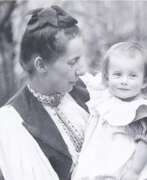

Jenny Fikentscher (born Nottebohm) was a German painter and graphic artist associated with the Art Nouveau movement. She studied at the School of Women Painters in Karlsruhe and later became part of the Grötzingen artist colony. Fikentscher married animal painter Otto Fikentscher and raised five children in an unconventional artistic household. She was known for her botanical motifs and lithographs, often featuring local plants. Fikentscher also created collectible images for the Stollwerck chocolate company.
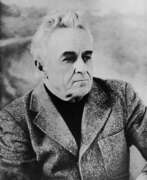

Alexander Grigorievich Maksymenko (Russian: Александр Григорьевич Максименко) was a Soviet and Ukrainian painter of the second half of the twentieth and early twenty-first centuries. He is known as a painter, graphic artist, watercolorist, and art historian.
Alexander Maksymenko worked in the genres of still life, landscape, portrait, as well as in genre painting. His genre works cover themes of collective farm life, including "Masters of the Land" and "Innovators of Collective Farm Fields". For the latter work he received the Stalin Prize. The master actively participated in exhibitions in Ukraine and abroad. His works are in the National Art Museum of Ukraine, the Museum of the History of Ukraine in World War II, as well as in other art museums and private collections.
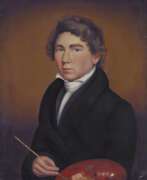

William Matthew Prior was an American folk artist known for his portraits, particularly of families and children.
About 1,500 portraits are attributed to Prior. His works are in many museums and institutions around the United States including the Harvard Art Museums, Museum of Fine Arts, Boston, and the National Gallery of Art.
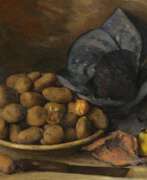

Wilhelm Schmurr was a German painter and co-founder of the Sonderbund in Düsseldorf. His style, characterized by clear expression, was influenced by the Pre-Raphaelites, Symbolists, and Realists. He received several awards and medals for his work and was a member of various art associations. Schmurr taught at the Kunstakademie Düsseldorf and inspired by the farmers after the war, he created scenes of simple life and still lifes. He was awarded the Karl-Ernst-Osthaus-Preis and the Bundesverdienstkreuz erster Klasse and became an honorary member of various artist associations.
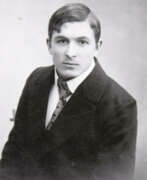

Wäinö Waldemar Aaltonen was a Finnish artist and sculptor, celebrated for his contributions to the cultural landscape of Finland, particularly during the early years of the nation's independence. Born in 1894, Aaltonen's works are distinguished by their nationalist themes and monumental scale, often reflecting the spirit and identity of Finland. His artistic journey was notably influenced by a trip to Italy in 1923, where he encountered cubist and futurist art, elements of which he integrated into his own work.
Aaltonen's sculptures are key features in Finland's public spaces, including the well-known statues in the House of Parliament and numerous works in Turku, such as the "Lily of Turku" and a statue of the runner Paavo Nurmi. His mastery is also showcased at the Wäinö Aaltonen Museum of Art in Turku, which houses a significant collection of his sculptures, paintings, and drawings. This museum not only celebrates his legacy but also serves as a central repository for his extensive works, donated by Aaltonen himself.
For those interested in exploring Aaltonen's work and the impact of Finnish sculpture, a visit to the Wäinö Aaltonen Museum of Art is invaluable. The museum provides a comprehensive view of his artistic evolution and contributions to Finnish art. For updates on exhibitions and events related to Wäinö Aaltonen, consider signing up for notifications through the museum's mailing list, ensuring you stay informed about new insights and offerings related to this pivotal artist.


Pavel Efimovich Ab (Russian: Павел Ефимович Аб) was a Russian Soviet artist, born on November 22, 1902, in Orel. He is renowned for his contributions to painting and graphic arts, having studied under notable mentors such as Kuzma Petrov-Vodkin and A. I. Savinov at the VKhUTEIN in Leningrad during the years 1923 to 1929.
Ab's career was deeply influenced by his experiences during the Great Patriotic War, where he served in the 21st Rifle Division of the NKVD on the Leningrad Front. His war-time sketches of city defenders and subsequent military honors played a significant role in his artistic expression. After the war, he continued to actively participate in the creative community, producing notable works like "Pavlov in Koltushi" and "Speech of V. I. Lenin at the Admiralty Shipyards".
His artworks, which often depicted military and historical themes, are preserved in various museums and private collections in Russia and abroad. Ab's commitment to the Leningrad Union of Artists until his death in 1974 ensured that his legacy would influence future generations of artists.
For enthusiasts and collectors keen on exploring Russian Soviet art, staying updated on exhibitions and sales featuring Pavel Efimovich Ab's works can be enriching. Sign up here for updates related to new product sales and auction events concerning Ab's art.


Vilmos Aba-Novák was a distinguished Hungarian artist, celebrated for his unique blend of Expressionism with classical and Renaissance influences. Born in Budapest in 1894, he was deeply influenced by his experiences in the Austro-Hungarian Army during World War I, which later permeated his art. Aba-Novák is best known for his vibrant frescoes and murals that decorate several public buildings in Hungary, including churches and civic buildings in Szeged and Budapest.
His works, characterized by dynamic compositions and a bold use of color, often depicted village fairs, circuses, and everyday Hungarian life, bringing an almost fantastical quality to these scenes. His remarkable ability to combine traditional subjects with modern artistic elements made his work a significant contribution to modern Hungarian art. Aba-Novák's art was not only appreciated in his homeland but also internationally, earning him major awards like the Grand Prize at the Paris World Exhibition in 1937 and at the 1940 Venice Biennale.
For art collectors and enthusiasts interested in exploring or purchasing Vilmos Aba-Novák's works, staying informed about upcoming sales and exhibitions is crucial. Signing up for updates can provide valuable insights into available pieces and auction events. To keep abreast of such opportunities, consider registering for newsletters or alerts specifically tailored to Aba-Novák's art. This will ensure you don't miss out on acquiring a piece of this unique artistic heritage.
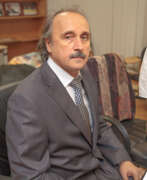

Sultan Shamsutdinovich Abaev (Russian: Султан Шамсутдинович Абаев), a Chechen and Russian artist born on November 1, 1954, in Khaidarkan, Soviet Union, is celebrated for his distinctive contributions to landscape art. A member of the Artists Unions of Saint Petersburg and the Chechen Republic, Abaev's work exemplifies his profound connection to his cultural roots and the rich landscapes that inspire him.
Educated at the prestigious Repin Institute of Painting, Sculpture, and Architecture in Saint Petersburg, Abaev has been honored multiple times for his artistic achievements, including receiving the title of Honored Artist of the Russian Federation. His works have been internationally recognized, finding places in private collections across countries such as Germany, the United States, and Japan.
Abaev's career also includes time spent abroad in Sri Lanka and South Korea from 1991 to 1993, where he expanded his artistic horizons and produced a series of paintings influenced by these experiences. Today, his works are sought after by collectors, especially those interested in landscapes and cultural narratives embedded in art.
Stay updated on exhibitions and sales related to Sultan Shamsutdinovich Abaev's enchanting landscapes by signing up for our exclusive alerts. These updates are essential for collectors and art connoisseurs interested in owning a piece of Chechen and Russian art history.
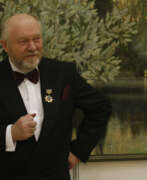

Mikhail Georgievich Abakumov (Russian: Михаил Георгиевич Абакумов) was a Russian artist, celebrated for his diverse artistic contributions and his deep connection to his homeland, Kolomna. Born in 1948, Abakumov became a prominent figure in the Russian art scene, recognized as a People's Artist of Russia and a dedicated teacher and community leader in Kolomna.
Abakumov's artistic oeuvre includes industrial and genre canvases, evocative landscapes, and intimate portraits, which are held in high esteem across Russia and in private collections worldwide. Notable works like "Metallurg" (1974) and "Spring Morning" (1996) showcase his ability to capture the essence of Russian life and landscapes. His art has been exhibited extensively within Russia and internationally, including over thirty solo exhibitions since 1979, contributing significantly to the cultural tapestry of the Soviet and post-Soviet periods.
His works are part of prestigious collections, including the State Tretyakov Gallery, and have been featured in various museums across cities like Moscow, St. Petersburg, and internationally.
For those interested in exploring Russian art and the legacy of Mikhail Georgievich Abakumov, signing up for updates on exhibitions and sales of his artworks can provide valuable insights and opportunities. Join our community to stay informed about events and auctions featuring Abakumov's remarkable works.
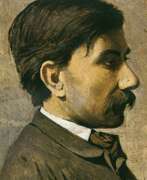

Giuseppe Abbati was an Italian artist, renowned for his role in the Macchiaioli movement. Born on January 13, 1836, in Naples, Abbati's early exposure to art came from his father Vincenzo, who specialized in painting architectural interiors. This foundational experience deeply influenced his initial works, which were primarily interiors. However, Abbati's artistic journey took a significant turn after losing his right eye in the Battle of Capua during Garibaldi's 1860 campaign. This event marked a period of transformation, leading him to Florence where he engaged deeply with the Macchiaioli group at Caffè Michelangiolo.
Abbati's contribution to the Macchiaioli movement was profound, characterized by a bold treatment of light and shadow, a technique he mastered by painting en plein air. His landscapes, such as the "View from the Wine Cellar of Diego Martelli" (1866), exemplify his skill in capturing the interplay of light, offering viewers a luminous landscape scene glimpsed through the doorway of a darkened interior. His works are celebrated for their unique perspective and are housed in prestigious collections, including several museums across Italy.
Tragically, Abbati's promising career was cut short at the age of 32, when he died in Florence from rabies, a consequence of a dog bite. Despite his brief life, his artistic legacy endures, influencing generations of painters who admire his innovative approach to natural light and landscape.
For enthusiasts and collectors keen on exploring Giuseppe Abbati's work further or acquiring pieces associated with him, subscribing to updates on new sales and auction events is highly recommended. Stay informed on opportunities to own a piece of this remarkable artist's legacy. Subscribe today for exclusive updates.
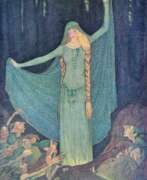

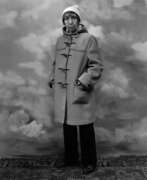

Berenice Alice Abbott was an American photographer best known for her portraits of between-the-wars 20th century cultural figures, New York City photographs of architecture and urban design of the 1930s, and science interpretation in the 1940s to 1960s.
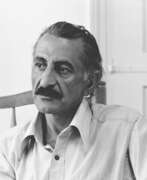

Shafic Abboud, also known as Chafic Abboud, was a renowned Lebanese painter whose artistic journey led him from Beirut to the vibrant art scene of Paris in 1947. Embracing the modernist and abstract movements of the mid 20th century, Abboud honed his skills at the ateliers of prominent artists like Jean Metzinger and Fernand Léger. This exposure influenced his transition from figurative and landscape painting to his signature colorful personal abstractions. Despite his years in France, Abboud remained deeply connected to his oriental roots, drawing inspiration from oral storytelling and Byzantine icons.
Abboud´s creativity extended to ceramics, terracotta, carpets, and lithography. His exceptional talent garnered global recognition, with exhibitions in prestigious venues like Doha's Mathaf and Paris's Institut du Monde Arabe. In May 2012, Beirut Exhibition Center celebrated his artistic legacy in a comprehensive exhibition.
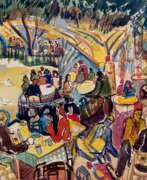

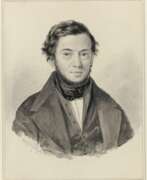

Jacobus Theodorus "Jacob" Abels was a Dutch painter. He was a pupil of the animal painter Jan van Ravenswaay. In 1826 Abels had visited Germany, and on his return settled at the Hague. He was especially noted for his paintings of moonlit landscapes. The Museum at Haarlem has works painted by him.
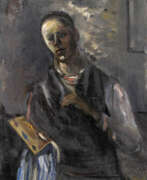

Alfred Aberdam was a Polish painter associated with the School of Paris, known for his participation in the artistic movements of the early 20th century. Born in Lviv, then part of the Austro-Hungarian Empire, Aberdam's journey in the arts began with his studies at the Munich Academy in 1911. His life and work were marked by significant historical events, including imprisonment during World War I and an active period in Poland's art scene before settling in Paris. Aberdam's contributions are remembered through his numerous exhibitions, including solo showcases in Paris, London, and Tel-Aviv, as well as posthumous retrospectives like the one in Geneva's Petit Palais in 1970.
Aberdam's works reflect the cultural dynamism of the School of Paris, capturing a confluence of influences that characterized the European art scene. Despite being somewhat lesser-known, his paintings have been traded at auction, reflecting a continued interest and recognition of his artistic legacy. His art remains an important part of the narrative of Jewish painters in Paris from 1905 to 1939, contributing to our understanding of the era's artistic diversity.
For collectors and experts in art and antiques, Aberdam's work embodies the intricate history and cultural exchanges of the early 20th century European art world. His paintings not only represent his individual talent but also tell the story of the times in which he lived, worked, and created. Understanding Aberdam's art is a journey through the cultural melting pot that was Paris during a pivotal period in modern art history.
For those interested in exploring the legacy and works of Alfred Aberdam further, or seeking to keep abreast of new product sales and auction events related to his work, subscribing for updates is invaluable. Stay informed on the latest developments and opportunities to appreciate or acquire pieces by this notable artist. Subscribe now to ensure you are alerted to new sales and auction events featuring the esteemed Alfred Aberdam.
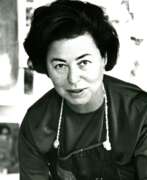

Ruth Davidson Abrams, a Jewish-American painter, left a lasting impact on the art world. As the art director at the Research Association of The New School and a lecturer at Parsons The New School for Design, she influenced aspiring artists.
Abrams gained recognition for her outer-space-themed paintings, notably "There Are Unknown Elements in the Universe as Old as Mankind" (1962). She actively engaged in art classes led by influential artists like Alexander Archipenko and William Zorach, known for their abstract approach. Despite being overlooked in a male-dominated era, Abrams' talent is now acknowledged. Her papers are preserved at the Yeshiva University Museum and the Smithsonian Archives of American Art. She collaborated with renowned artists such as William Zorach, Alexander Archipenko, and John D. Graham.
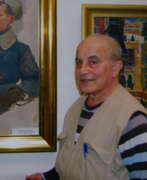

Victor Ashotovich Abramyan (Russian: Виктор Ашотович Абрамян) was a Soviet and Russian artist of the second half of the twentieth and early twenty-first centuries. He is known as a painter, a representative of the Leningrad school.
Victor Abramyan created portraits, landscapes, still lifes and genre paintings. He participated in exhibitions from the early 1970s in Leningrad. Among his famous works are "Blockade everyday life", "Still Life with a Centennial", "Leningrad. 1942. Women on Guard in the besieged city", "Young Guests" and others.
Abramyan's works are in museums and private collections in Russia and many other countries.
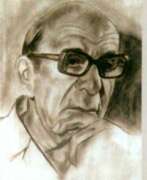

Memet Abselyamovich Abselyamov (Russian: Мемет Абселямович Абселямов) was a mid-20th century Soviet artist of Crimean Tatar origin. He is known as a landscape painter.
Memet Abselyamov became famous in 1935 with his genre painting "Kolkhoznitsy Udarnitsy", which was awarded the All-Russian prize and acquired by the Moscow Museum of Folk Art. During his life in Tajikistan, where he came after the deportation of the Crimean Tatars, the artist created mainly landscapes, including the paintings "Night in the Crimea", "Crimean Cypresses", "Gurzuf. Where A. Pushkin visited", "Sunny Day", "Spring in Tajikistan", "The Last Ray" and others.
He was a member of such creative associations as "Krymkhudozhnik", the Union of Artists of the USSR, the Union of Artists of the Tajik SSR.
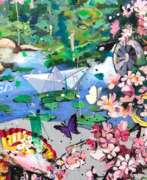

Angelo Accardi is a contemporary Italian artist. He grew up surrounded by both modern and traditional art. Although he studied fine art at the Art Academy of Naples, he never completed his training. Angelo Accardi illustrates surreal visions of everyday life under realistic backdrops of urban and natural landscapes. There is never a single meaning, but a whole story behind each painting. Ironic, striking, and playful, Accardi’s unique perspective and avant-garde style is a result of his diverse inspirations.
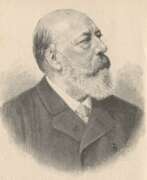

Andreas Achenbach was a German landscape and seascape painter in the Romantic style. He is considered to be one of the founders of the Düsseldorf School.[citation needed] His brother, Oswald, was also a well known landscape painter. Together, based on their initials, they were known as the "Alpha and Omega" of landscape painters.
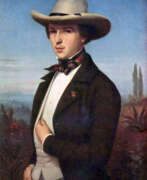

Oswald Achenbach was a German painter associated with the Düsseldorf school of painting. Though little known today, during his lifetime he was counted among the most important landscape painters of Europe. Through his teaching activities, he influenced the Kunstakademie Düsseldorf. His brother, Andreas Achenbach, who was twelve years older, was also among the most important German landscape painters of the 19th century. The two brothers were humorously called "the A and O of Landscapes" (a reference to their initials matching a common German reference to the Alpha and Omega).
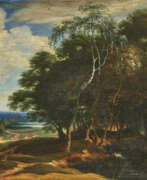

Lucas Achtschellinck was a Flemish landscape painter. He is counted among the landscape painters active in Brussels referred to as the School of Painters of the Sonian Forest who all shared an interest in depicting scenes set in the Sonian Forest, which is located near Brussels.
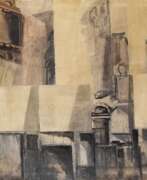

Peter Ackermann was a German painter and graphic artist. He became known for his alienation of architectural subjects. Ackermann was a representative of fantastic realism. The preferred subject of his work was classical Italian architecture, which he drew on site. He put together columns, portals and walls with machine parts, ruins and desolate parts of the city, which were piled up threateningly and thus alienated. In his etchings he showed references to the techniques of the old masters, his pictorial conception is compared with that of Giovanni Battista Piranesi and Canaletto.


Otto Ackermann was a 19th-century German painter, mainly of landscapes. In 1897, he moved to Düsseldorf, where he remained until his death. He painted mainly landscape paintings of Belgium and the Netherlands, also working in printmaking on the same subjects. He was chairman of the local Düsseldorf Painters' Society and is mentioned in the diaries of Albert Herzfeld.
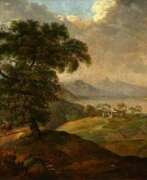

Johann Adam Ackermann was a German landscape painter of the early 19th century. His best-known works are his winter landscapes and watercolours. Johann Ackermann was the brother of Georg Friedrich Ackermann, who also painted landscapes but with less success.
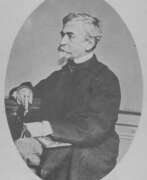

Benno Rafael Adam is a German animalist painter.
He began his fine art studies under the tutelage of his father, the balloonist painter Albrecht Adam. He masterfully depicted hunting dogs and horses, especially scenes of hunting wild animals. Benno Adam also illustrated several textbooks and manuals on livestock breeding.
Benno's son Emil Adam also became an artist.
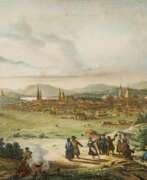

Jean-Victor Vincent Adam was a French painter and lithographer.
Adam came from a dynasty of artists and studied at the École des Beaux-Arts in Paris. He painted views of various cities, including Russian Kazan and Yekaterinburg, as well as battle scenes from Napoleon's military campaigns. Collections of images of French military costumes prepared by Adam were published. His genre paintings with hunting scenes and animals are also known.
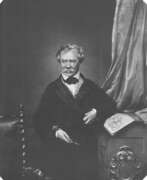

Albrecht Adam was a Bavarian painter of the first half of the 19th century. He is best known for the fact that as a member of Napoleon's Grand Army he took part in the campaign against Russia in 1812 as the official artist of the headquarters of the IV (Italian) Corps. Throughout the campaign, the artist made sketches and drawings, capturing many of the important events of the campaign. Later, many of these sketches became the basis for full-fledged paintings, and to subjects from the Napoleonic wars, which he witnessed, Adam addressed until the end of his very long life.
Albrecht Adam was also the author of memoirs, in which he described in detail the Battle of Borodino and a number of other key events of the War of 1812.
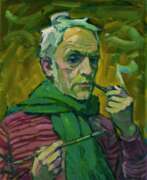

Heinrich Emil Adametz was a German expressionist painter.
Adametz studied in Hamburg and at the Academy of Fine Arts in Stuttgart. Influenced by Expressionism, he painted portraits, seascapes with ships, and still lifes. Later, the events of World War II took such a heavy toll on the artist's family that he was unable to recover from them for the rest of his life.
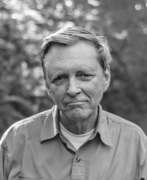

Robert Adams is an acclaimed American photographer known for his profound exploration of the American West's changing landscapes. His work, which gained prominence in the mid-1970s, delves into the tension between the natural beauty of the land and the marks of human encroachment. Adams's photography is a reflection on humanity's relationship with the environment, offering both a critique and a celebration of the landscape.
Robert Adams's notable series, such as "Turning Back" and "The New West," showcase his unique perspective on environmental and urban development issues. His work extends beyond just capturing images; it is a thoughtful commentary on the balance between nature and industrialization. His photographs, often devoid of people, focus on the land itself, telling a story of alteration and resilience.
Exhibitions of Adams's work, such as "American Silence: The Photographs of Robert Adams" at the National Gallery of Art, provide insight into his 50-year career and his ability to capture the silent yet profound narratives of the American landscape. His pieces are part of major collections and have been featured in numerous retrospectives, underlining his influence and significance in the world of photography.
For art collectors and enthusiasts, Robert Adams's work offers a poignant perspective on the American West, blending aesthetic beauty with critical environmental commentary. Engaging with his work invites reflection on our interaction with the landscape and our role in shaping the environment.
If you're interested in staying updated on Robert Adams's work and exhibitions, consider subscribing to newsletters from galleries and museums that feature his art. This way, you'll be informed about new displays of his work and opportunities to engage with his insightful perspectives on the American West.
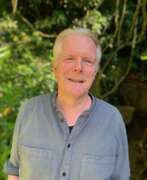

Richard Adams is a British artist and illustrator living and working in Sussex.
Adams received an honors degree in graphic design from Leicester Polytechnic and initially worked as an illustrator in London. Richard Adams creates all his paintings using chalk pastels, then fixes and impregnates with a special varnish that leaves an impenetrable surface. He depicts a variety of English landscapes and seashores, often inhabited by quirky characters and animals, as well as amusing domestic scenes. The artist successfully captures the humor and absurdity of everyday life in a bygone and contemporary English style.
Adams' work is regularly exhibited in London and other UK cities to great acclaim, and internationally in Sydney, Washington DC, Bremen and Madrid.
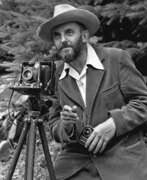

Ansel Easton Adams was an American photographer and environmentalist, celebrated for his black-and-white images of the American West, particularly Yosemite National Park. His profound connection with nature was not only the subject of his art but also the essence of his environmental advocacy, earning him a revered place in both the art and conservation worlds.
Ansel Adams' early exposure to the beauty of nature and a supportive family environment nurtured his dual interests in music and photography. His photographic journey began with a simple Kodak Box Brownie camera, which he used during his early visits to Yosemite, a place that would become the central theme of his life's work. Ansel Adams' dedication to photography and the environment was interwoven, as he utilized his art to advocate for the conservation of America's natural landscapes.
In the 1930s, Adams co-founded Group f/64, advocating for photographic purity and sharpness of focus, principles that would define his work. His role in establishing the photography department at the Museum of Modern Art in New York underscored his commitment to elevating photography as a respected art form. Ansel Adams' work has been exhibited in prestigious institutions such as the Smithsonian American Art Museum and MoMA, showcasing his contributions to American art and environmentalism.
For collectors and art experts, Ansel Adams' legacy transcends his iconic images; it lies in his ability to merge aesthetic excellence with a passionate message of environmental stewardship. His photographs not only capture the grandeur of landscapes but also serve as a timeless call to preserve the natural world.
To delve deeper into the world of Ansel Easton Adams and stay updated on new product sales and auction events related to his work, signing up for updates is a step toward embracing the heritage of a pivotal figure in art and environmental advocacy.
Join our community of art and antique enthusiasts to honor Adams' vision and ensure his message continues to inspire future generations.
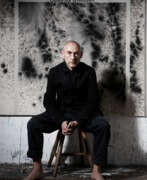

Hans Peter Adamski is a German painter and graphic artist who lives and works in Berlin and Dresden.
He studied at the Dusseldorf Academy of Art and served as professor and dean of the Dresden University of Fine Arts. Adamski is one of the most important representatives of the Neue Wilden ("New Wilden") movement of the 1980s. In addition to painting, he works in drawing, sculpture, paper, fabric and plaster.
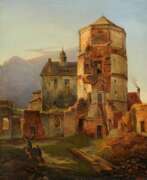

Carl Adloff was a German landscape painter. He is known for his urban scenes, architectural compositions and winter views.
Carl Adloff studied painting at the Düsseldorf Academy of Fine Arts from 1833 to 1843, where he attended the landscape class of Johann Wilhelm Schirmer and the architecture class of Rudolf Wigman. His choice of motifs favoured the Dutch landscape, based on seventeenth-century Netherlandish painting. He often painted seascapes enveloped in a romantic mood of tranquillity in moonlight, morning and evening light.
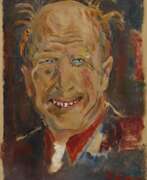

Lucien Adrion was a French post-impressionist painter, draughtsman and printmaker. He is known for his depictions of the French countryside and beaches, as well as of Parisian life, including landscapes, still lifes, figures and landmarks.
Throughout his career, Adrion exhibited his work at the Salons in Paris, where he was praised for his ability to capture the movement and transience of city life.
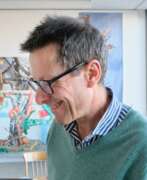

Urs Aeschbach is a Swiss media artist working in various techniques. Nature is always a pictorial theme in Urs Aeschbach's paintings. Her main characters are mushrooms, woody plants, animals, jellyfish, as well as dogs and horses. The artist's paintings are inspired by photographs and illustrations. In addition to paintings, Eschbach creates art and construction projects, video works, as well as constructions and installations.
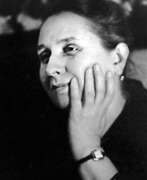

Taisia Kirillovna Afonina (Russian: Таисия Кирилловна Афонина) was a Soviet artist of the second half of the twentieth century. She is known as a painter, graphic artist, representative of the Leningrad school.
Taisia Afonina participated in exhibitions since 1940, creating portraits, landscapes, genre compositions, still lifes and etudes. At the beginning of her career she was interested in military subjects, and then delved into the genre of portraiture and lyrical landscape. Her style is characterized by tonal painting, the rendering of light and air environments and subtle coloristic combinations. In the 1980s she preferred the watercolor technique, painting flowers such as roses, daisies and tulips. Her works are in museums and private collections in Russia and other countries.
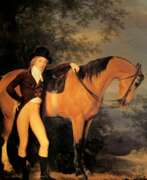

Jacques-Laurent Agasse is a Swiss animal painter.
As a young man he studied at the veterinary school in Paris and was well versed in equine anatomy. In 1880 he moved to London and began painting dogs and racehorses, as well as exotic animals such as giraffes and zebras, which he observed in London zoos. Later, Agasse began to paint landscapes, portraits, and genre scenes as well.
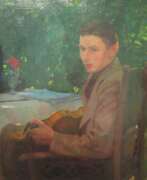

Friedrich Ahlers-Hestermann was a German painter and art writer from Hamburg. He was a member of the Hamburgische Künstlerclub of 1897, as well as of the Hamburg artist's workshop of 1832 and pupil of the Académie Matisse in Paris. After the First World War, he was a co-founder of the Hamburg Secession.
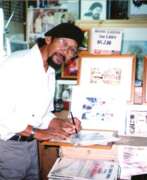

Abdul Ghani Ahmad is a contemporary Malaysian artist. He is known as a watercolorist working in the styles of realism and abstraction.
Abdul Ghani Ahmad creates landscape and rural landscapes as well as abstractions. His work is characterized by photographic precision and detail. Some of the artist's best known works include the Pristine Nature, Journey and Flora of Malaysia series. He has also produced a series of postcards with views of Malaysia.
Ahmad is a member of various art organizations including the Asian Watercolorists Confederation and the Malaysian Artists Union.
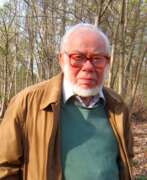

Wolfram Aïchele was an artist from Baden-Württemberg in Southern Germany, son of renowned animal artist Erwin Aichele. After training as a sculptor, he studied religious and Byzantine art, drawing inspiration from his pilgrimage to Serbia, Kosovo, Macedonia, and Mount Athos. Aïchele focused on painting icons using egg tempera, aiming to revive the pure iconographical style corrupted in the 19th century. He later moved to Paris, where he explored various influences such as Eastern European folk art, Persian miniatures, and modern artists like Chagall and Klee. Aïchele's work transitioned to a unique blend of figurative and abstract art, primarily expressed through watercolors and painted collages.
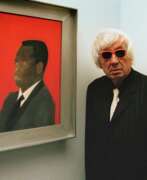

John Ronald Craigie Aitchison was a Scottish painter. He was best known for his many paintings of the Crucifixion, one of which hangs behind the altar in the chapter house of Liverpool Cathedral, Italian landscapes, and portraits (mainly of black men, or of dogs). His simple style with bright, childlike colours defied description, and was compared to the Scottish Colourists, primitivists or naive artists, although Brian Sewell dismissed him as "a painter of too considered trifles".
His career-long fascination with the crucifixion was triggered by a visit to see Salvador Dalí's Christ of St John of the Cross in 1951 after it was acquired by the Kelvingrove Gallery.
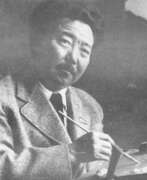

Gapar Aitievich Aitiev (Russian: Гапар Айтиевич Айтиев), a pioneering figure in Soviet Kyrgyz art, was born in 1912 and became a cornerstone of Kyrgyz cultural heritage through his impactful contributions as an artist and educator. Aitiev's journey in art began at the Moscow Art School in Memory of 1905, where he studied under N. P. Krymov between 1935 and 1938, laying the groundwork for his illustrious career. His profound connection to his Kyrgyz roots was reflected in his artwork, characterized by epic, poetic landscapes of Kyrgyzstan, such as "Midday on Issyk Kul" (1954), and detailed portraits like the "Gallery of portraits of contemporaries" (1979). Aitiev's contributions to the art world earned him the prestigious titles of People’s Artist of the USSR and Hero of Socialist Labor, marking his influence on Soviet and Kyrgyz art history.
The Gapar Aitiev Kyrgyz National Museum of Fine Arts, named in his honor, stands as a testament to his legacy, showcasing not only his work but also a broad spectrum of Kyrgyz and Russian art, spanning from traditional Kyrgyz artifacts to contemporary works post-independence. This museum, alongside the Gapar Aitiev Memorial Studio Museum in Bishkek, provides insight into Aitiev's life, offering a personal glance at his workspaces and the art that filled his surroundings. These institutions preserve and celebrate Aitiev's dedication to portraying the tranquil beauty of Kyrgyz landscapes and the spirit of its people, making his work an integral part of Kyrgyz national identity.
For those interested in the rich tapestry of Central Asian art, visiting these museums in Bishkek is a journey through the heart of Kyrgyz culture and history, brought alive by Aitiev's artistic vision. His work not only captures the essence of Kyrgyzstan's landscapes and people but also serves as a bridge between the traditional and the modern, embodying the nation's cultural evolution.
To stay updated on exhibitions and events celebrating Gapar Aitievich Aitiev's legacy and to explore more about his contributions to art and culture, consider signing up for updates. This subscription will keep you informed about new product sales and auction events dedicated to Aitiev's work, ensuring that enthusiasts and collectors alike remain connected to the vibrant world of Kyrgyz art.


Ivan Konstantinovich Aivazovsky (Russian: Иван Константинович Айвазовский) was a Russian-Armenian painter, celebrated for his mastery in depicting seascapes. Born in 1817 in Feodosia, Crimea, Aivazovsky became one of the most renowned Russian artists of his time, with a career spanning over 60 years during which he created more than 6,000 paintings. His work is characterized by a profound understanding of the play of light on water, capturing the essence of the sea like no other artist of his era.
Aivazovsky's paintings stand out for their dramatic intensity and the emotional depth they evoke. He was particularly adept at illustrating the sea's many moods, from calm, serene waters to tumultuous storms. His ability to depict light, whether it be the tranquil glow of the moon on the water's surface or the fierce blaze of the sun setting over the ocean, was unparalleled. Among his most celebrated works are "The Ninth Wave" and "Among the Waves," both of which showcase his skill in portraying the sea's power and beauty. These masterpieces can be found in prestigious museums and galleries worldwide, including the State Russian Museum in Saint Petersburg and the Tretyakov Gallery in Moscow.
For collectors and experts in the realms of art and antiques, Aivazovsky's oeuvre represents a pinnacle of romantic landscape painting. His works are not only aesthetically magnificent but also embody a rich cultural and historical narrative, making them highly sought after in the art market. If you are passionate about the fusion of culture, art, and history embodied in painting, Ivan Konstantinovich Aivazovsky's works are a testament to the enduring allure of the sea and its many faces.
To stay informed about new product sales and auction events related to Ivan Konstantinovich Aivazovsky, we invite you to sign up for our updates. This subscription ensures you're always in the know about opportunities to add a piece of this legendary artist's legacy to your collection.
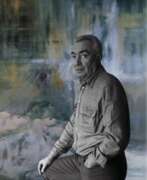

Giuseppe Ajmone was an Italian painter and printmaker.
He studied painting at the Brera Academy of Fine Arts in Milan and in 1946 was one of the signatories of the Realist Manifesto, also known as "Oltre Guernica.
Ajmone painted both landscapes and still lifes as well as semi-abstract figures.
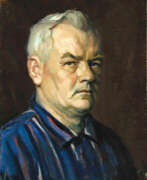

Ivan Osipovich Akhremchik (Russian: Ива́н О́сипович Ахре́мчик) was a twentieth-century Belarusian Soviet artist. He is known as a painter and teacher.
Ivan Akhremchik worked in the genres of portrait, thematic painting, landscape and monumental art. He was one of the first Belarusian artists turned in his work to the theme of the establishment of Soviet power and socialist construction in Belarus. As a muralist, the artist participated in the creation of several pictorial panels for exhibitions and cultural institutions of Belarus.
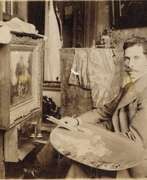

Johannes Evert Hendrik Akkeringa was part of the second generation of the Hague School painters. Akkeringa is primarily known for his paintings and watercolours of women and playing children at the beach, women mending nets and intimate tea-time conversations.
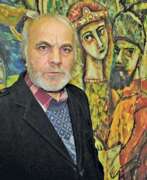

Vladimir Ivanovich Akulov (Russian: Владимир Иванович Акулов) is a Soviet and contemporary Belarusian artist. He is known as a painter, graphic artist and teacher, a representative of the second wave of Belarusian avant-garde.
Vladimir Akulov in his work has developed a unique style under the influence of expressionism, cubism, primitivism, fauvism. He is a master of portrait, landscape, still life, compositions with symbolic and allegorical subjects, illustrations of literary works. During his career the artist created several cycles of portraits, including those of famous people.
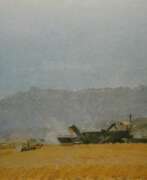

Sabyrbek Mambetsadykovich Akylbekov (Russian: Сабырбек Мамбетсадыкович Акылбеков) was a Soviet Kyrgyz artist of the mid-twentieth century. He is known as one of the first professional Kyrgyz painters in the USSR.
Sabyrbek Akylbekov became famous for his lyrical emotional landscapes. He made a significant contribution to the development of Kyrgyz fine arts through his creative, pedagogical and public activities. His works have been exhibited at many levels, including republican, all-Union and international exhibitions.
The master's works can be found in the Kyrgyz National Museum of Fine Arts named after G. Aitiev, the State Tretyakov Gallery and in museums of the CIS countries.
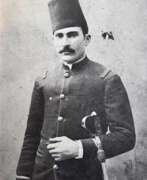

Abdul Qadir Al Rassam was an Iraqi painter of the first half of the twentieth century. He is known as a painter and graphic artist and is considered the founder of modern Iraqi painting.
Al Rassam, a military officer by training, studied drawing at the Military College in Istanbul. Returning to Iraq, he created landscapes, portraits and murals. His work is characterized by historical and ethnographic accuracy. The master, according to critics, contributed to the influence of the European academic school on the Iraqi art scene.
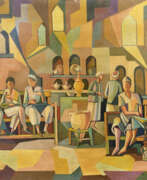

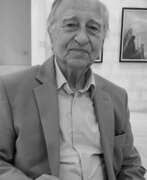

Saad Al-Tai is a contemporary Iraqi artist. He participated in several exhibitions in Baghdad and abroad. Al-Tai was a member of the Iraqi Impressionists Group. Despite the name of the group, Al-Tai was not categorically an impressionist, rather his style lent more towards cubist realism. For him, the colour of the painting was determined by its subject matter. Al-Tai is an award winning artist who, amongst other things, received Italian knighthood in 2005 in recognition for his efforts in fostering Iraqi-Italian cultural dialogue including founding and heading the Italian Language Department in 2002 at the College of Languages, Baghdad University.
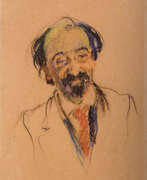

Manuel Khristoforovich Alajalov (Russian: Мануил Христофорович Аладжалов) was a prominent Russian and Soviet landscape painter and educator, born in 1862 in Nakhichevan-on-Don. Alajalov's work is distinguished by his exquisite landscapes that capture the essence of the Russian countryside. His paintings are noted for their masterful use of light and shadow, bringing a serene and lifelike quality to his depictions of nature.
Alajalov's career was marked by a deep commitment to portraying the natural world with authenticity and emotion. His art reflects a profound appreciation for the tranquility and beauty of rural Russia, making him a significant figure in the history of Russian art. Alajalov's legacy as a teacher also influenced many aspiring artists of his time, further cementing his place in the artistic community.
Alajalov's works are showcased in several major Russian museums, including the State Tretyakov Gallery, where art enthusiasts can experience his contribution to landscape painting. His paintings continue to be celebrated for their technical excellence and emotional depth, attracting collectors and admirers from around the world.
For updates on new product sales and auction events related to Manuel Khristoforovich Alajalov, sign up for our newsletter. Stay informed about exclusive opportunities to own a piece of this celebrated artist's legacy.
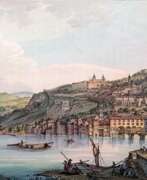

Jean-François Albanis Beaumont was a French landscape painter, engineer, traveler and geographer.
He studied engineering in Paris and worked on architectural structures at Chambérly. Beaumont later accompanied the Duke of Gloucester, William Frederick of Hanover on a grand tour of Germany, Italy, France, and Switzerland, making notes and detailed pictorial sketches of views along the way. In 1800 he published the illustrated books Journey to the Lepontine Alps from France to Italy and Description of the Grecian and Cottian Alps (1802 and 1806).
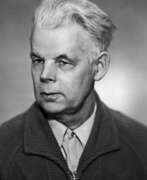

Pyotr Filippovich Alberti (Russian: Пётр Филиппович Альберти) was a Soviet and Russian artist of the second half of the twentieth century. He is known as a painter, a representative of the Leningrad school.
Pyotr Alberti created portraits, landscapes, genre paintings. He actively exhibited since 1951 in Leningrad, demonstrating his works along with the masters of his time. The artist had a broad writing and bright coloring, expressive stroke and used various techniques. He paid special attention to the study of nature. In the late period of his career, he became fond of still life paintings with favorite motifs such as peonies and watermelons.
Alberti's works are preserved in museums and collections around the world.
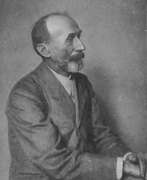

Kazimierz Alchimowicz was a Polish painter who is considered one of the last Romantics in Polish painting. Among other things, he illustrated Adam Mickiewicz's poem Pan Tadeusz with a series of twelve paintings (1898) and prints (1903). He was the elder brother of the Polish painter Hiacynt Alchimowicz.
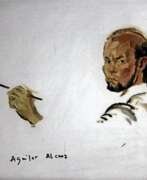

Frederico Aguilar Alcuaz is a Filipino abstract painter, sculptor and ceramist, and master tapestry artist.
He studied painting at the University of the Philippines' School of Fine Arts, then lived and worked both in the Philippines and Spain, and in Brno, Czech Republic, he worked extensively on tapestries.
Alcuaz has earned international acclaim with his vivid abstract works in various genres and techniques, and he has exhibited extensively internationally.
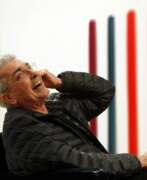

Peter Alexander was an American artist who was part of the Light and Space artistic movement in southern California in the 1960s. He is notable for his resin sculptures from the 1960s and 1970s. He studied architecture in England before receiving both his BFA and MFA from the University of California, Los Angeles. Alexander started as an architect, before developing a reputation in the 1960s for creating his sculptures.
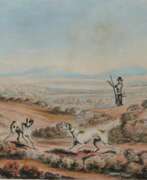

Samuel Alken the Elder was a British painter, printmaker and illustrator.
Samuel Alken studied at the Royal Academy School in London. In 1779 he published A New Book of Ornaments Designed and Engraved by Samuel Alken, and later established himself as one of the most distinguished engravers in the new technique of aquatint. Alken produced magnificent compositions of the British countryside, including moonlit night scenes. His works include engravings by George Morland, Richard Wilson, Thomas Rowlandson, and Francis Wheatley. In 1796 his plates of sixteen views of the lakes of Cumberland and Westmorland, after drawings by John Ames and John Smith, were published, and in 1798 a set of aquatint views of North Wales after drawings by the Rev. Brian Broughton.
His sons, Samuel Alken the Younger (1784-1824), Henry Thomas Alken (1785-1851) and Samuel Henry Alken (1810-1894) also became artists.
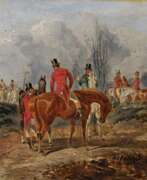

Samuel Henry Alken the Younger was a British painter.
Samuel Henry Alken was the son of Henry Thomas Alken (1785-1851) and grandson of Samuel Alken Senior (1756-1815). Like his father, he usually depicted equestrian sporting scenes, but did so in sets. The most famous of the sets of paintings by Henry Alken, Jr. is a depiction of hunting at Belvoir Castle.


William Herbert Allen was an English landscape watercolour artist whose career spanned more than 50 years from the 1880s to the 1940s. He was invariably referred to as «W. H.» rather than by his given name. He produced several thousand watercolours, chalk and pencil sketches mainly of the landscapes, traditions and people of West Surrey and North-east Hampshire. In addition, he produced scenes of other parts of the British Isles and various parts of continental Europe. These works included commissions in Italy for the Victoria and Albert Museum, Dublin, Edinburgh and Preston museums. He was made a member of the Royal Watercolour Society in 1903 and the Royal Society of British Artists in 1904 and his work was exhibited at the Royal Academy in 1927.


Darren James Almond is an English artist, based in London. He was nominated for the 2005 Turner Prize. He works in a variety of media including photography and film, which he uses to explore the effects of time on the individual.[3] He uses "sculpture, film and photography to produce work that harnesses the symbolic and emotional potential of objects, places and situations, producing works which have universal as well as personal resonances"
